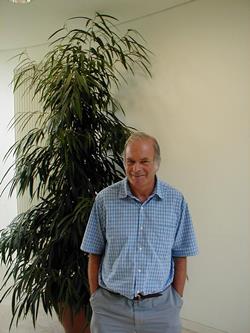Former President Bryan Lovell* says Carbon Capture and Storage is the last roll of the dice for fossil fuels.
 The June editorial (Geoscientist 27.5 – ‘Coal is Dust’) described a divisive threat to our Society at the end of the last century. Ted Nield illustrated a local story of the gulf between the British coal industry and the environmentalists: ripples at the edge of the pond.
The June editorial (Geoscientist 27.5 – ‘Coal is Dust’) described a divisive threat to our Society at the end of the last century. Ted Nield illustrated a local story of the gulf between the British coal industry and the environmentalists: ripples at the edge of the pond.
During this century, as the climate ‘sceptics’ have squared up to environmentalists, the Geological Society has remained a unified body. The key to that unity is observational science. We rely on the evidence from the rocks.
We continue to argue with each other about climate change, and much else, in the Lower Library and in Geoscientist. We do so happily, because we know that in the end none of us can argue with the rocks themselves. We will go out in the field, look at the rocks again, and hope to see who was right.
Policy
In 2010 the Society published a statement of policy on human-induced climate change. The report was prepared by a group of Fellows renowned for their knowledge of the record of past climates preserved in rocks and ice. The only guidance provided by Council was that these mighty scholars should stick to those tangible records in assessing whether we really did have a problem requiring attention. We do.
The geological case for concern about human-induced climate change has strengthened since 2010. One example: we have new evidence from the geological record of the Paleocene-Eocene Thermal Maximum (PETM) in Spitsbergen and China. That evidence suggests that the input of carbon that triggered the PETM was an order of magnitude less rapid than our own rate of release of carbon to the atmosphere: disturbance of Earth systems at speed by us.
Challenge
We challenge those at both ends of the public argument on climate change. The climate sceptics flounder when presented with evidence from the geological record. Environmentalists with a general aversion to the fossil-fuel industry fret at geological support for carbon capture and storage (CCS).
That geological contribution to development of commercial-scale CCS becomes ever more significant. Academic and industry scientists work together on successful field trials of storage in conventional hydrocarbon-style traps.
Field trials
I declare an interest, as consultant to BHP, in research sponsored by that company on storage in open systems. This project is now underway at the Universities of Cambridge, Melbourne and Stanford. The aim is to quantify capillary, solution and mineral trapping of carbon dioxide in a range of reservoirs. Successful field trials of trapping by these mechanisms would transform the debate on CCS.
Until this research is complete, it is premature to consign any type of fossil fuel to the scrapheap. We geologists have been set the challenge of finding adequate safe storage for carbon dioxide. If we can’t do that, the fossil-fuel game is indeed up. If we can, we can continue to use coal, gas and oil. We have seldom had a more important job to do.
* Bryan Lovell is at the University of Cambridge.